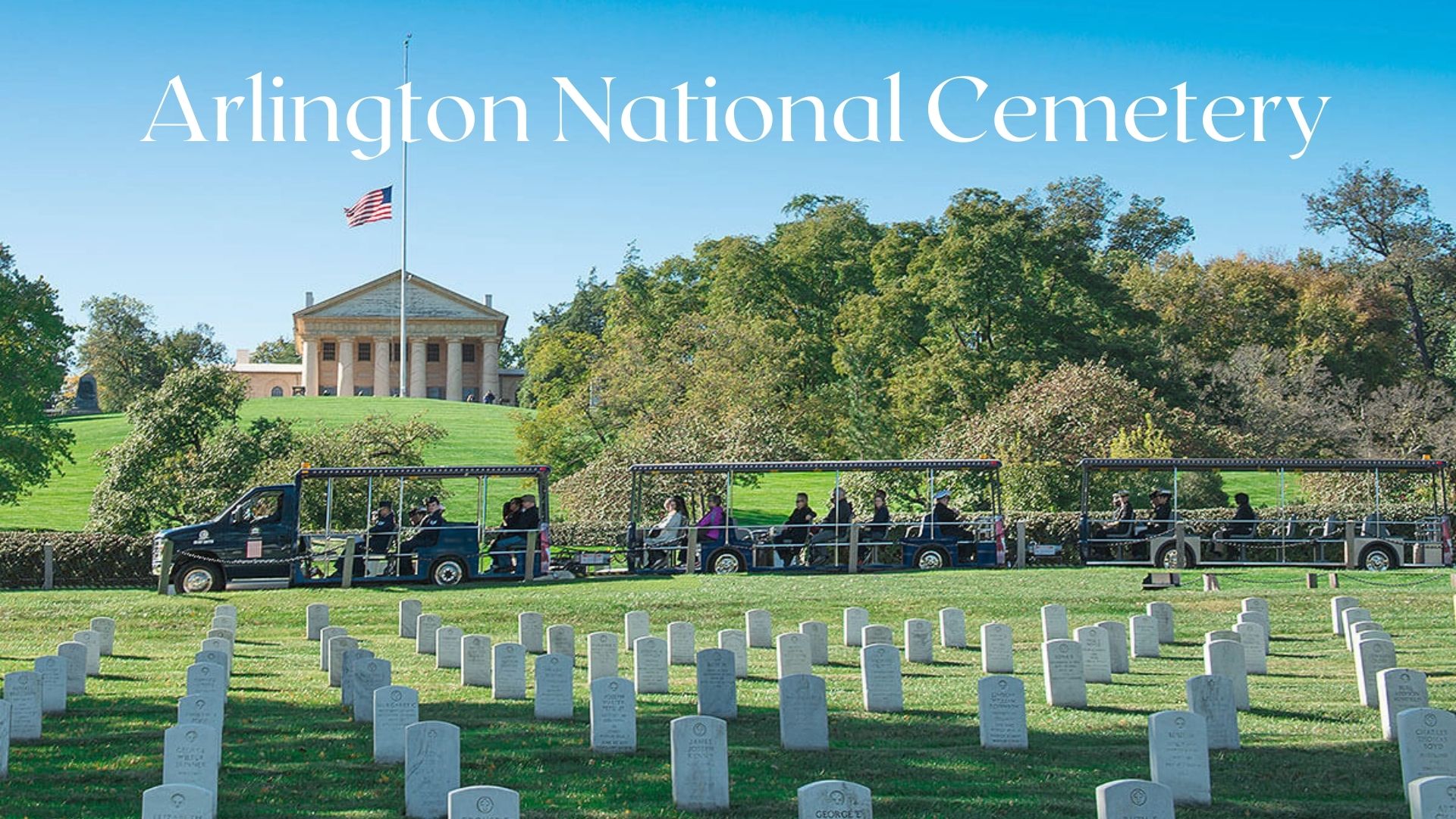Overlooking the nation’s capital, Arlington National Cemetery lies on the west bank of the Potomac River. The hallowed ground serves as the final resting place for numerous presidents, Supreme Court justices, astronauts, and other public servants, including more than 400,000 military personnel, veterans, and their immediate families. Among the most frequently visited sites in the cemetery is the grave of President John F. Kennedy whose grave is marked with an ‘eternal flame.’
This national landmark is the country’s largest and most important of the 141 National Cemeteries nationwide. Still an active burial ground, it conducts over 25 – 30 funerals each weekday and 6 – 8 funerals on Saturdays. The grounds honor those who have served our nation, providing a sense of beauty and peace for guests. Its rolling green hills are dotted with trees that are hundreds of years in age, complementing the gardens found throughout the cemetery’s 639 acres.
The cemetery, Arlington Memorial Bridge, the Hemicycle, and Arlington House make up the Arlington National Cemetery Historic District that was added to the National Historic Register in 2014.
Arlington National Cemetery occupies land once owned by George Washington Parke Custis, the adopted grandson of Martha and George Washington. He built the Arlington House as a memorial to the nation’s first president. In 1857, the property was left to his daughter, Mary Anna Randolph Custis, who had married Robert E. Lee 26 years earlier. With the secession of Virginia from the Union, the family evacuated the property. Federal troops incorporated the land into their defensive fortifications around Washington. Part of the property was used as a Freedman’s Village where formerly enslaved persons received assistance after their liberation.
As the number of casualties climbed during the Civil War, the federal government needed additional cemetery space to inter the dead. To meet this demand, 200 acres of the plantation served as a national cemetery. The US government purchased the property after the Civil War. George Washington Custis Lee sued the federal government for the return of the land, which he argued the Union Army seized illegally. In 1882, the Supreme Court ruled in his favor and the federal government paid Lee $150,000 for the property, which is equivalent to about $3.9 million in 2021.
Arlington Cemetery has been expanded from the original 200 acres many times throughout the years. Even with an upcoming expansion of the site to accommodate 80,000 new burials, cemetery officials say Arlington will run out of room by the 2060s.
According to a Pentagon Inspector General’s report military families may wait up to 49 weeks for burials of loved ones because of the high demand for graveside ceremonies and the increasing mortality rates of older veterans.
The National Cemetery Administration has expanded the columbarium in the nation’s National Cemeteries to conserve space, but some have a personal or religious objection to cremation.
The U.S. Army is planning to limit eligibility for burials at Arlington National Cemetery as the iconic burial ground runs out of in-ground burial space. Under a new proposal, only “service members who received the highest combat awards” would have the right to be buried there. This includes troops killed in action, former POWs, and those who earned a Purple Heart, Silver Star, or higher. The Army plans to finalize new eligibility requirements by the end of 2021.

